The Hubble Mission Support Team has prepared a traditional space calendar for 2023. It differs from previous editions in that it also includes photographs taken by the James Webb Space Telescope (JWST). On the pages of the calendar you can see fiery nebulae, distant star clusters and galaxies, as well as Jupiter.
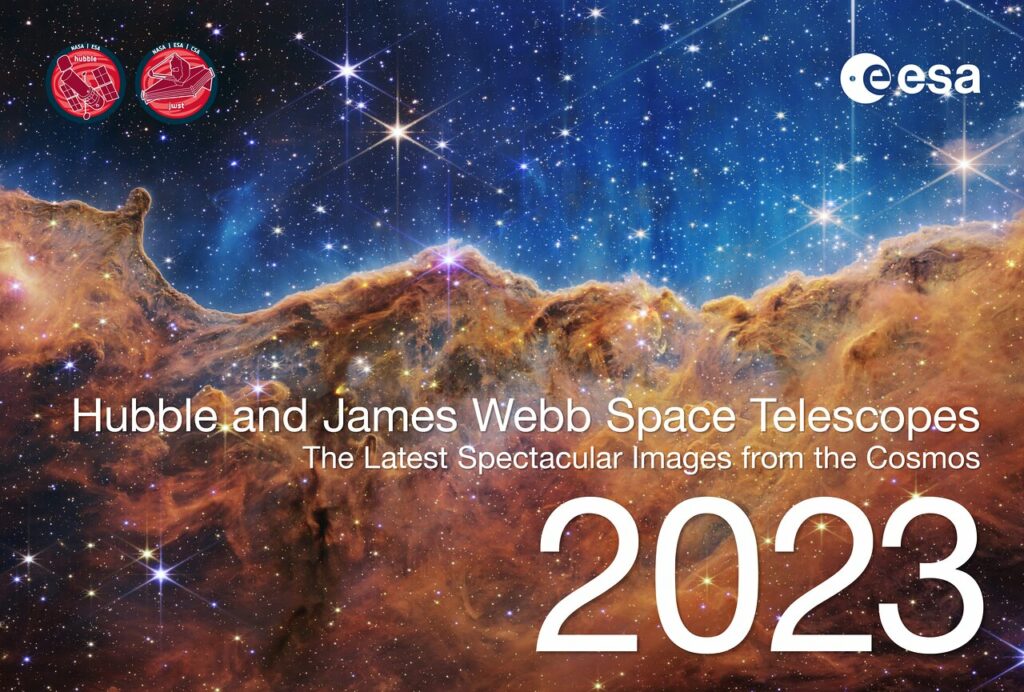
The calendar cover features the Kiel Nebula. It is located at a distance of 7600 light years from Earth. The nebula is a “stellar maternity home” within which new luminaries and exoplanets are forming right now. The shot was taken by the JWST observatory. The length of the pictured fragment of the nebula is approximately 7 light years.
The photo for January
The January photo shows the hourglass-shaped cloud of gas and dust surrounding the protostar L1527. Its age is only 100 thousand years. The protostar is hidden from us by dust clouds, but we can see a dark line in the middle of the neck of the hourglass. It corresponds to the protoplanetary disk. The picture was taken by the JWST telescope.
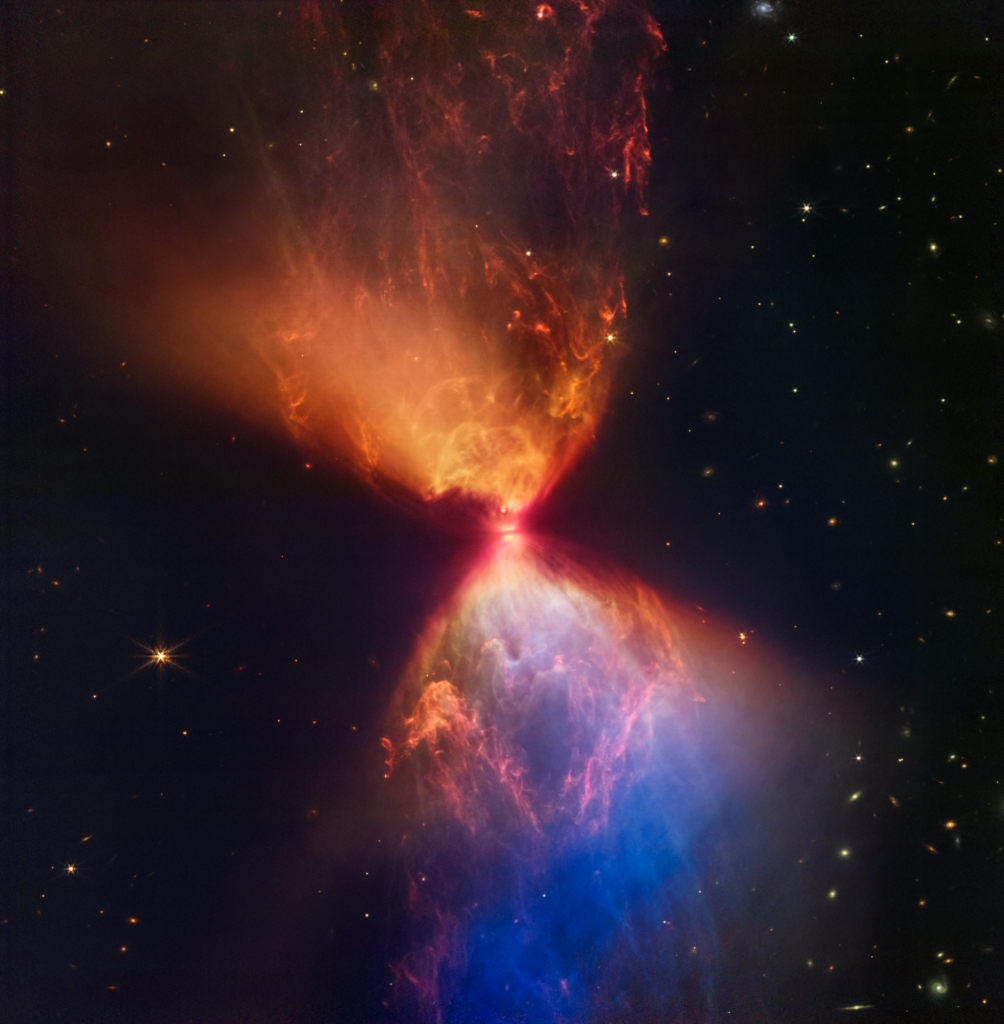
The photo for February
In the February image, you can see two galaxy clusters at once. The photo on the left was taken by JWST. It shows the cluster SMACS 0723. We see it as it was 4.6 billion years ago, when our planet was just forming. The photo on the right was taken by Hubble. It features the galaxy cluster Abell 611, located 3.2 billion light years from Earth.
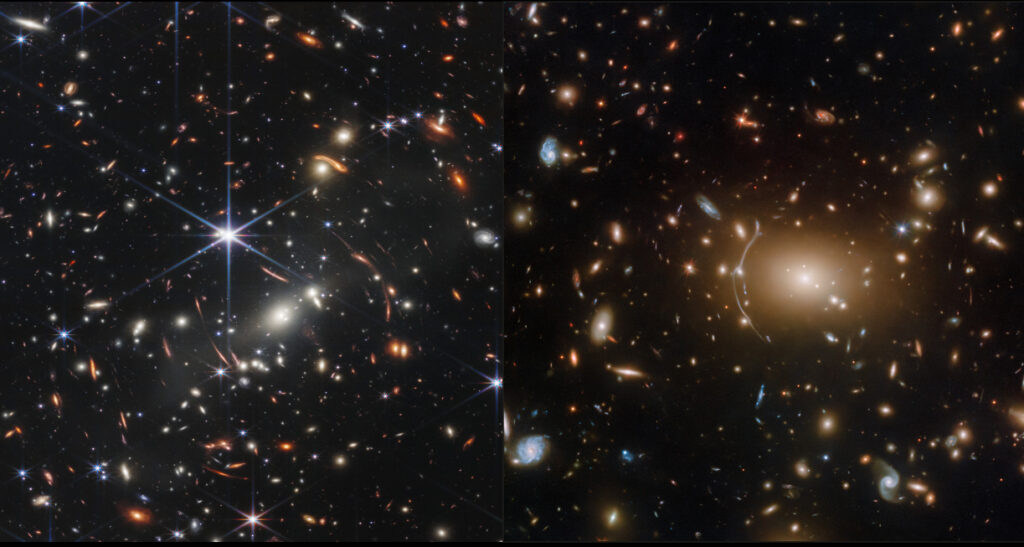
The photo for March
The Tarantula Nebula is captured in the March picture. It is a vast region of active star formation in the Large Magellanic Cloud that spans more than 340 light-years. Thanks to its ability to detect infrared radiation, JWST managed to photograph thousands of previously unknown stars hidden from astronomers by dust clouds.
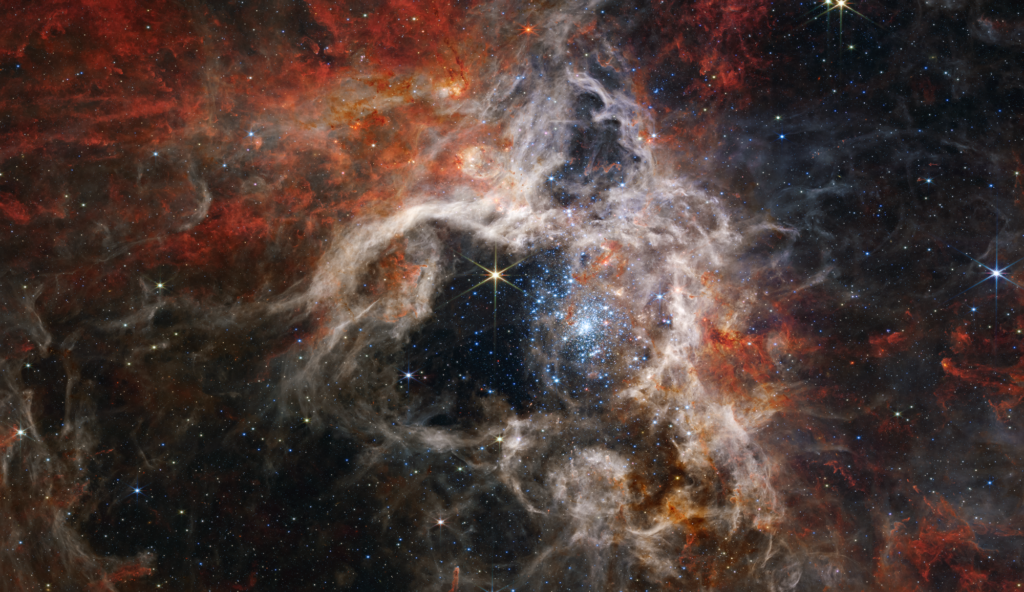
The photo for April
April’s picture is a collage of four images. It shows four pairs of colliding galaxies. They are IC 1623 (upper left, JWST photo), Arp 248 (lower left, Hubble photo), Arp 282 (upper right, Hubble photo), and IC 2431 (lower right, Hubble photo).

The photo for May
The May image includes two JWST images showing the planetary nebula NGC 3132, also known as the Southern Ring. The image on the left was taken in the near-infrared range, the image on the right in the mid-infrared range.
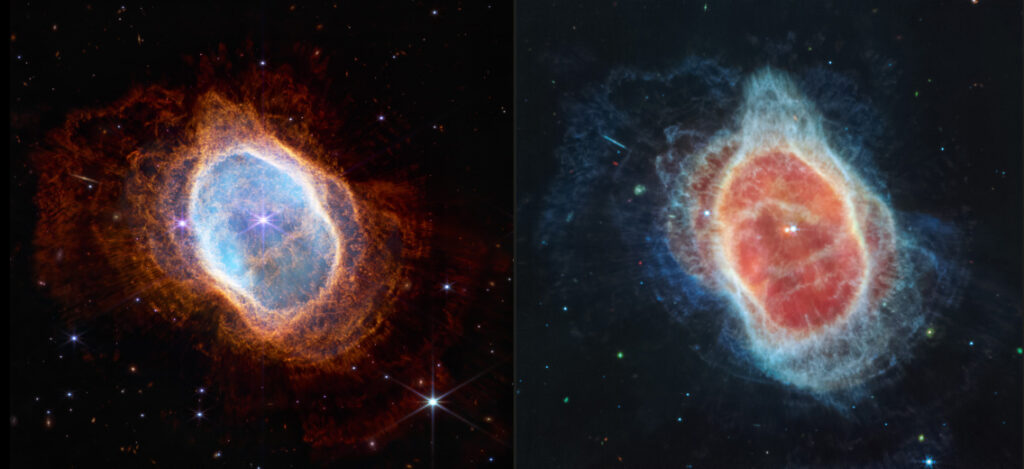
The photo for June
The June photo features Jupiter, the largest planet in the Solar System. This gorgeous portrait was captured by the JWST telescope. In the photo, you can see the famous Great Red Spot, the planet’s cloud belts, as well as the auroras over its poles.
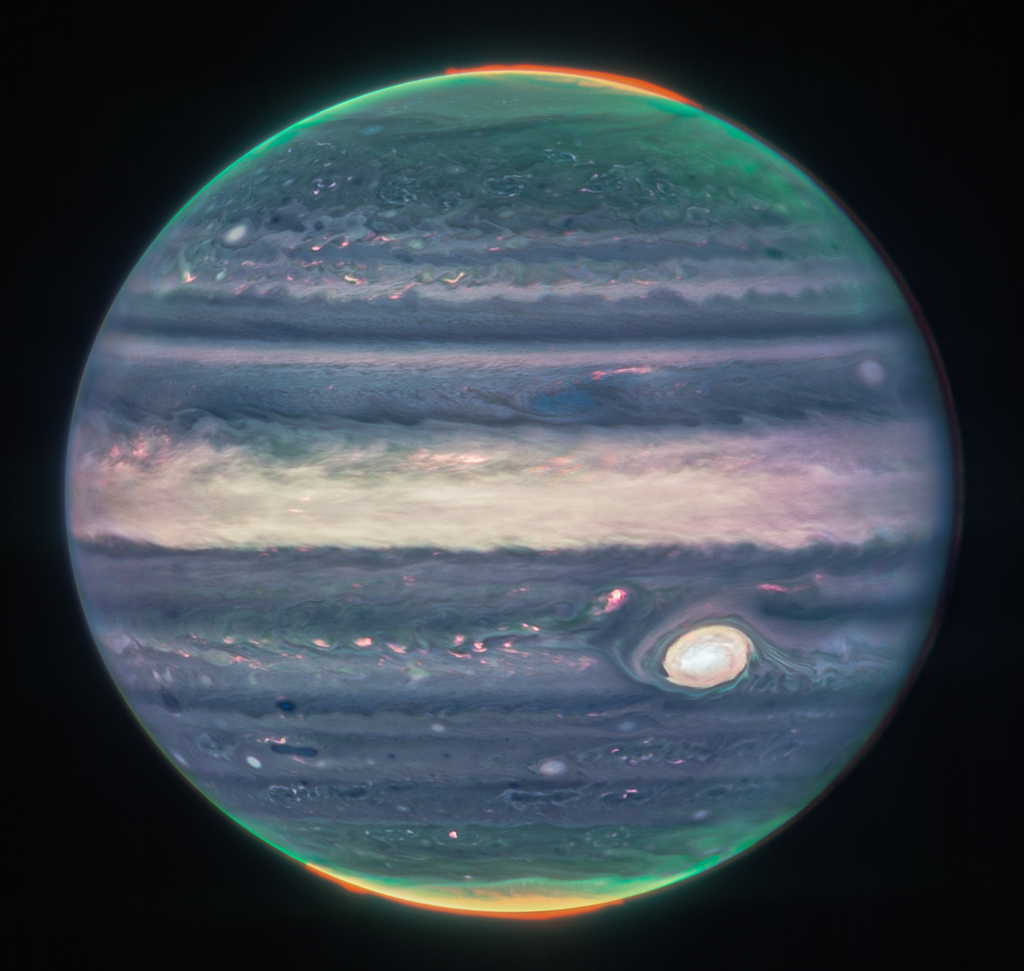
The photo for July
The July image is a collage of four globular clusters photographed by the Hubble Telescope. They are Liller 1 (upper left), Terzan 9 (lower left), Terzan 4 (upper right) and NGC 6569 (lower right).
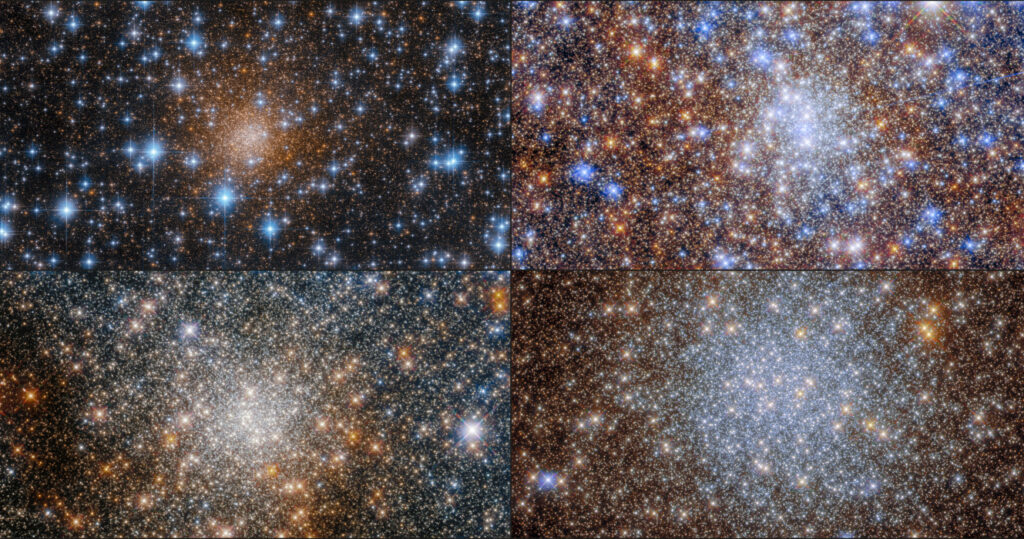
The photo for August
August’s picture is dedicated to interacting galaxies. The image on the left was taken by Hubble in visible spectrum, showing the pair of galaxies HCG 40. The image on the right was obtained by JWST in the infrared. It showcases the Stefan Quintet.
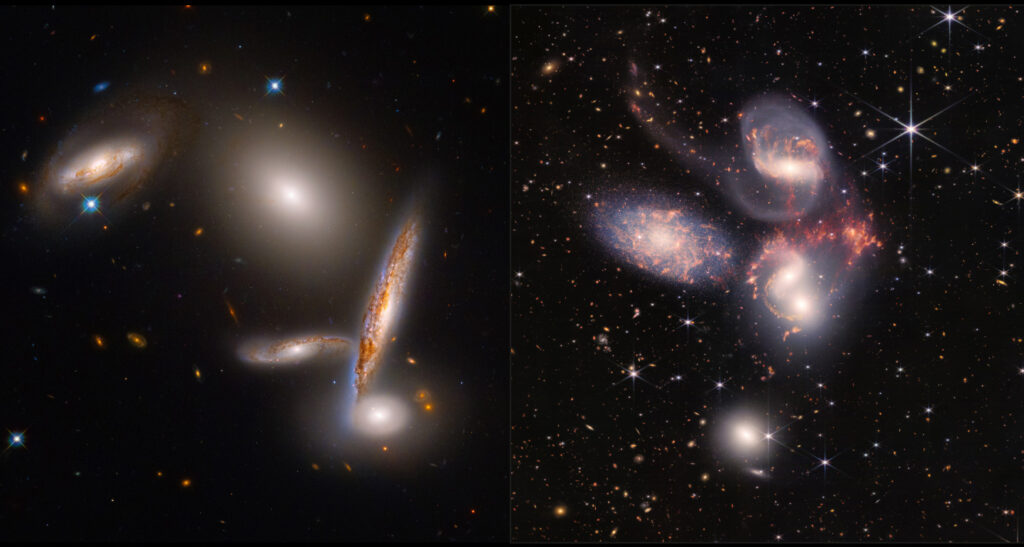
The photo for September
The September photo was taken by the Hubble telescope. The image shows Herbig-Наro object HH 505. It was formed by a newborn star located in the depths of the Orion Nebula.
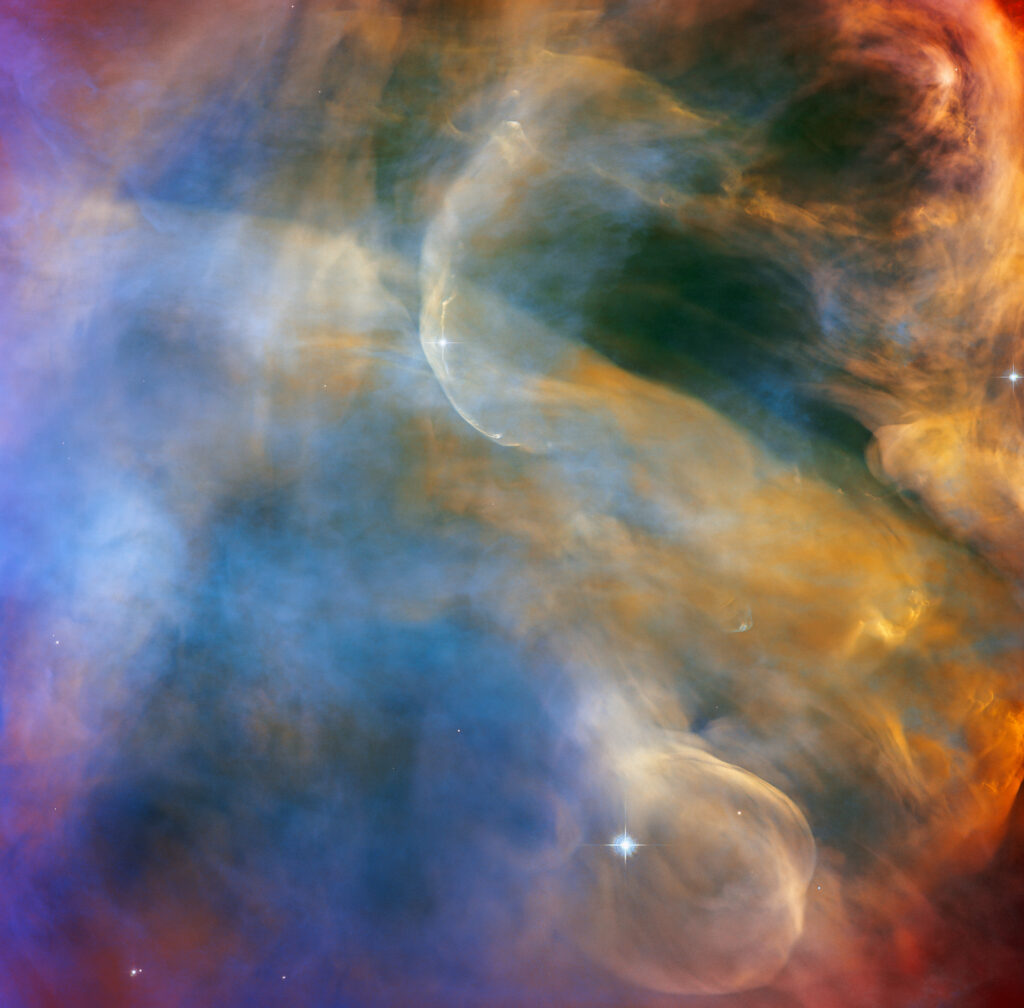
The photo for October
The October photo features the spiral galaxy M74, also known as the Phantom Galaxy. We can see three of its portraits at once. The picture on the left was taken by the Hubble telescope in visible light. The image on the right is JWST in the mid-infrared. The image in the center is a combination of these two images.
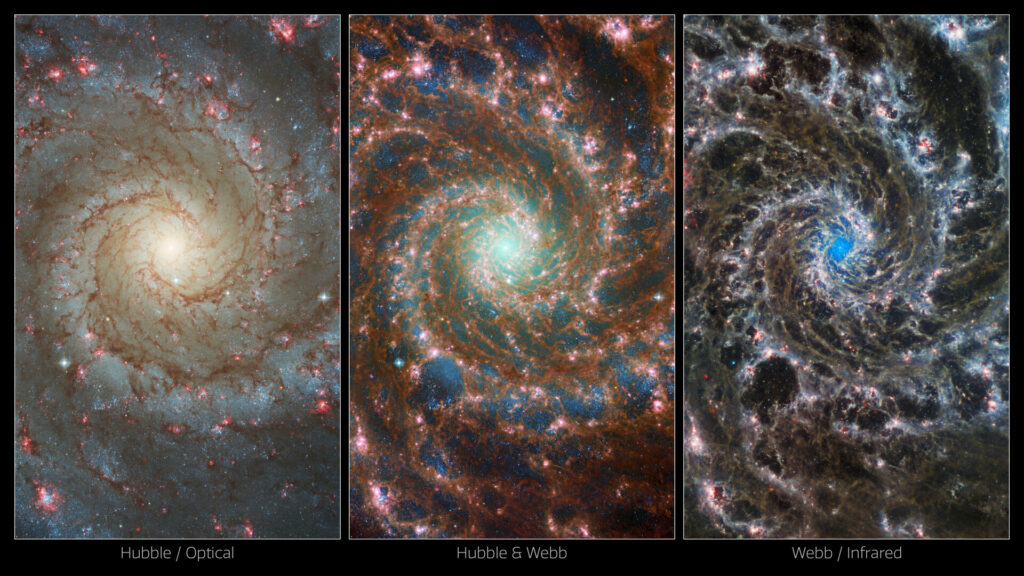
The photo for November
The November photo shows the famous Pillars of Creation, a cluster of interstellar gas and dust in the Eagle Nebula, located about 6,500 light-years from the Sun. The image on the left was taken by JWST in the mid-infrared range, on the right — in the near-infrared range.

The photo for December
In the December photo, you can see a wonderful portrait of the spiral galaxy NGC 7038. It is located 210 million light-years from Earth in the Indus constellation. The picture was taken by the Hubble telescope.
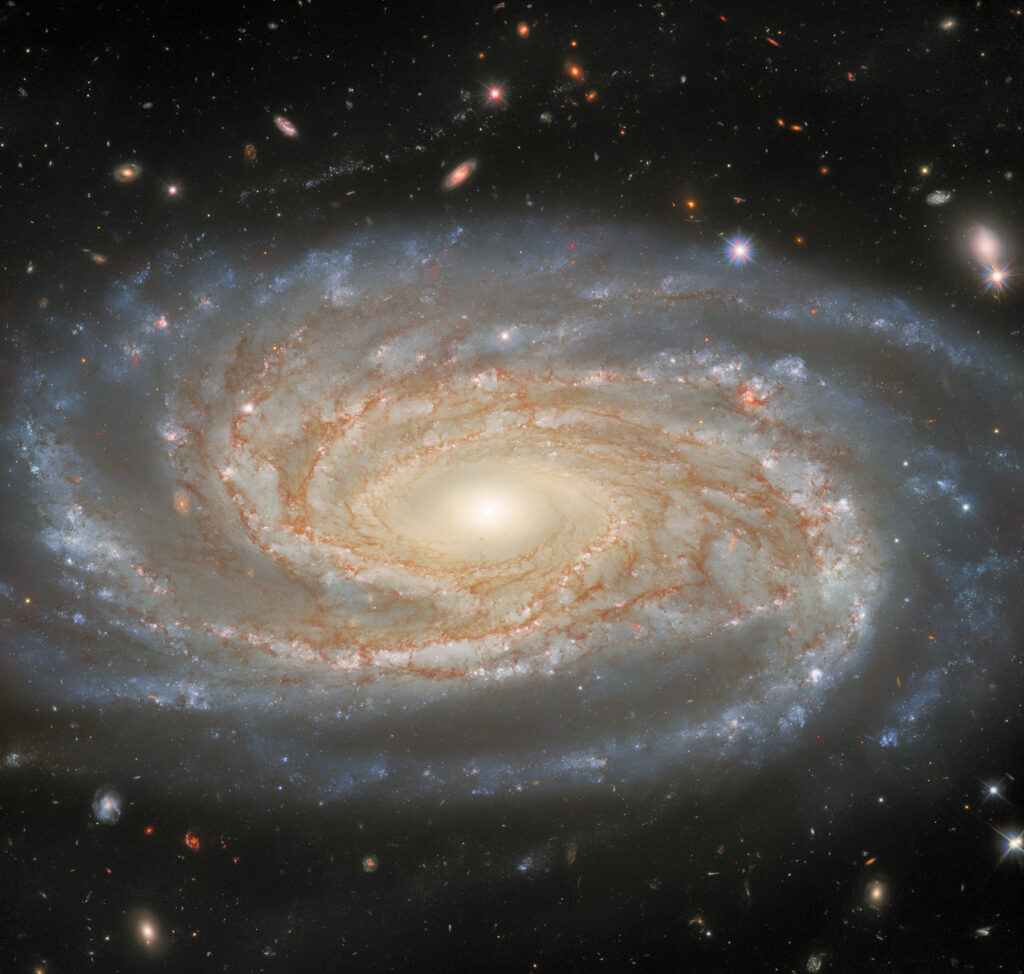
The 2023 Hubble/JWST calendar is for free distribution. A high-resolution printable version is available on the mission website.
You can also check out the Hubble space calendar for 2022.

